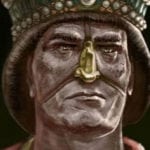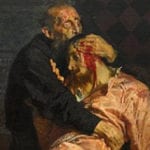 Technology
Technology  Technology
Technology  Humans
Humans 10 Everyday Human Behaviors That Are Actually Survival Instincts
 Animals
Animals 10 Animals That Humiliated and Harmed Historical Leaders
 History
History 10 Most Influential Protests in Modern History
 Creepy
Creepy 10 More Representations of Death from Myth, Legend, and Folktale
 Technology
Technology 10 Scientific Breakthroughs of 2025 That’ll Change Everything
 Our World
Our World 10 Ways Icelandic Culture Makes Other Countries Look Boring
 Misconceptions
Misconceptions 10 Common Misconceptions About the Victorian Era
 Mysteries
Mysteries 10 Strange Unexplained Mysteries of 2025
 Miscellaneous
Miscellaneous 10 of History’s Most Bell-Ringing Finishing Moves
 Technology
Technology Top 10 Everyday Tech Buzzwords That Hide a Darker Past
 Humans
Humans 10 Everyday Human Behaviors That Are Actually Survival Instincts
 Animals
Animals 10 Animals That Humiliated and Harmed Historical Leaders
Who's Behind Listverse?

Jamie Frater
Head Editor
Jamie founded Listverse due to an insatiable desire to share fascinating, obscure, and bizarre facts. He has been a guest speaker on numerous national radio and television stations and is a five time published author.
More About Us History
History 10 Most Influential Protests in Modern History
 Creepy
Creepy 10 More Representations of Death from Myth, Legend, and Folktale
 Technology
Technology 10 Scientific Breakthroughs of 2025 That’ll Change Everything
 Our World
Our World 10 Ways Icelandic Culture Makes Other Countries Look Boring
 Misconceptions
Misconceptions 10 Common Misconceptions About the Victorian Era
 Mysteries
Mysteries 10 Strange Unexplained Mysteries of 2025
 Miscellaneous
Miscellaneous 10 of History’s Most Bell-Ringing Finishing Moves
10 Badass Medieval Monarchs With Obnoxious Nicknames
Plenty of ancient nobles took on names designed to make their foes run away in wet-trousered terror. People like Thorfinn “Skull-Splitter” Einarrson—a 10th-century Earl of Orkney, or Vlad “the Impaler” Dracula—Wallachian prince and vampire prototype. Then, of course, there were a lot of lame kings who got called suitably lame things—Aethelred “the Unready” of England, Stefan “the Weak” of Serbia.
But there was also a unique class of rulers, who cunningly adopted absurd nicknames to lull their enemies into a false sense of security before brutally erasing them from the face of the planet. These are their stories.
10Lugaid ‘Son Of A Bitch’
High King Of Ireland

Ireland’s early medieval history is about as reliable as a meth-addicted babysitter, but—according to the sources we do have—Lugaid ascended the throne at Tara sometime around the year A.D. 200. He was known as “Mac Con,” which means “Son of a Bitch”—or “Son of the Hound,” if you want to be literal. This sobriquet originated when the infant Lugaid suckled at the teats of a hunting dog belonging to his stepfather, Ailill “Nude-Ear.”
Lugaid grew up to be a quarrelsome young man, fighting alongside a rebel called Nemed against both Nude-Ear and the High King Art mac Cuinn. When Nemed was killed, Lugaid was sent packing to Scotland. Undeterred, he gathered an army before returning to slay King Art and take his crown in the Battle of Mag Mucrama (the “Plain of Pig-Counting”).
After adopting King Art’s son Cormac, Mac Con ruled for seven years before he was deposed by the ungrateful bastard. Lugaid returned to his stepfather Ailill’s court, but the old man was not in a forgiving mood. Nude-Ear had notoriously foul teeth, and—instead of a hug—he bit Lugaid on the cheek. The infected wound festered for three days, while Mac Con attempted to escape, but one of Ailill’s warriors caught up with him and speared him in the face.
9Ragnarr ‘Hairypants’
Chief Of The Vikings

Ragnarr was a Scandinavian chieftain in the mid-ninth century. He bore the terrifying epithet “Loobrok”—“Hairypants” (you’ll sometimes see this rendered “Hairy Breeches,” as if that affords the man some dignity). Legend has it he got the name from a pair of protective cowhide pants he wore to clobber a noxious serpent.
The pagan Ragnarr rampaged around Northern Europe—burning churches and massacring Christians—before he was captured by King Aella of Northumbria and thrown into a pit of adders (presumably sans his fuzzy, snake-proof leggings). His sons—who followed in the family tradition with names like Ivar “the Boneless” and Sigurd “Snake-in-the-Eye”—raised a band of killers called “the Great Heathen Army” and took a blood-soaked revenge on Aella.
Some boring historians claim that Ragnarr never existed—that the sagas of his deeds are a composite of many Viking exploits. However, one of the possible inspirations—a pillager called Reginheri—is believed to have died from a case of diarrhea so violent that “all his entrails spilled onto the ground.” At least one medieval scholar has proposed that this fatal defecation left Reginheri’s pants matted, sticky, and foul—in a word, hairy.
8 Ludwig ‘The Leaper’
Count Of Thuringia
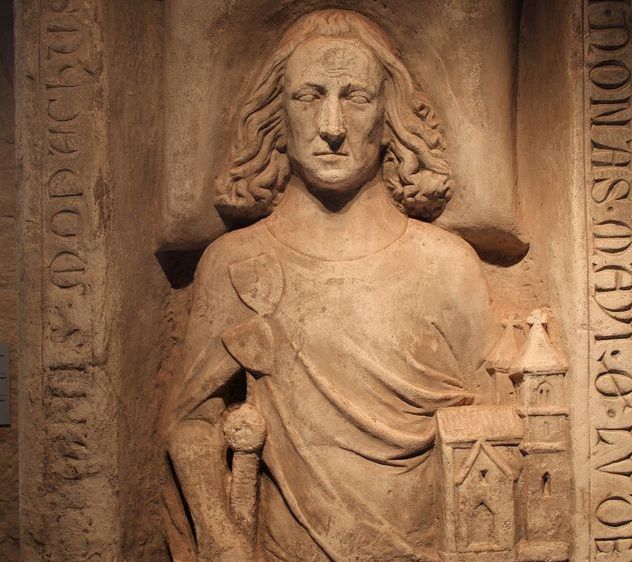
In the mid-11th century, Ludwig “the Bearded” ruled Thuringia in central Germany. Needing a way to distinguish himself from his hirsute father, Ludwig Jr. attempted to claim the county palatine of Saxony. Unfortunately, the county already had a ruler—Frederick—so Ludwig stabbed him.
Frederick’s henchmen were understandably upset, so they locked Ludwig in a tower. There he remained for three years, before his jailers tired of him hopping around the cell and announced they would execute him. Ludwig jumped out of the tower, into the Saale River, and up onto a boat, where a servant was waiting with his favorite horse. This brave plummet earned him the name “der Springer,” or “the Leaper.”
The Leaper retained a hankering for things that didn’t exactly belong to him. Out hunting one day, he spied an attractive mountain that—unfortunately—was not quite within his borders. Undeterred, he carted in soil from his own lands, dumped it on top of the mountain, and built a castle on top of that. The fortress, known as the Wartburg, stands to this day.
7Louis ‘The Universal Spider’
King Of France
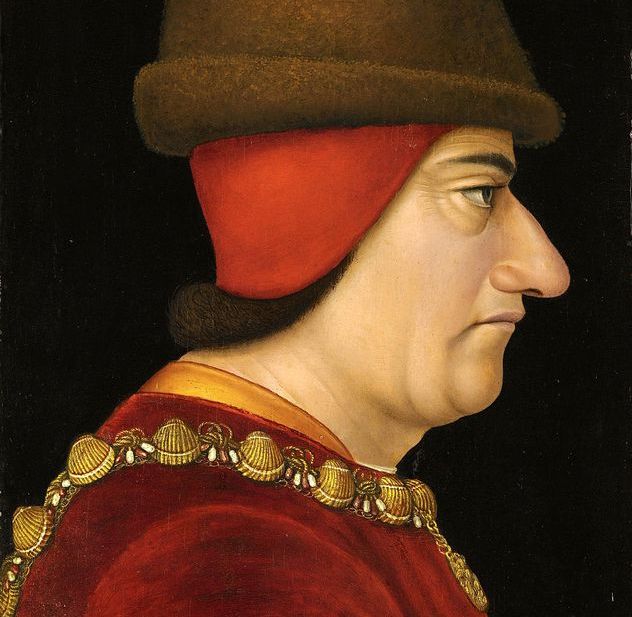
Boring people called him “the Prudent” or “the Cunning.” Those with a wackier sense of metaphor knew Louis XI as “l’Universelle Aragne”—“the Universal Spider”—presumably for his complex webs of intrigue, not for ubiquitous fly-snacking. As the Crown Prince of France, the devious little twerp raised armies against his father, Charles “the Well-Served,” and insulted the king’s girlfriend. Louis even married a princess Charles didn’t approve of—perhaps because the lucky bride was only 12 years old.
The Well-Served died in 1461, leaving the throne open for Louis. The Universal Spider’s skillful diplomacy brought an end to 116 years of war with the English. He then turned his attention to the attacking forces of Charles “the Bold,” Duke of Burgundy. Rather than face the duke head-on, Louis cleverly got Switzerland to do his dirty work for him, and a Swiss poleax turned Charles “the Bold” into Charles “the Dead.”
After that, the Universal Spider spent the rest of his reign improving France’s economy, consorting with astrologers, and lurking in dusty corners. Even after his death, the crafty king managed to turn up just about everywhere—appearing in works by Shakespeare, Sir Walter Scott, and Victor Hugo.
6Vsevolod ‘The Big Nest’
Grand Prince Of Vladimir
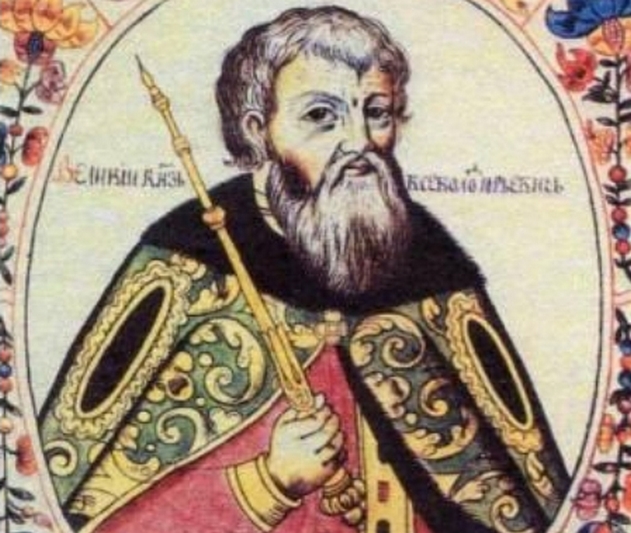
Vsevolod’s father—the Kievan Prince Yuri “Long-Arms”—already had 10 heirs by the time Vsevolod was born. But the boy’s mother, Helene, apparently had a soft spot for the little prince, because she spirited him away with her to Constantinople when Long-Arms died.
Vsevolod spent his childhood in Byzantium. At age 16 he married an Ossetian princess named Maria Shvarnovna. Vsevolod proved a potent potentate, and his epithet—“Balshoe Gniezdo” in Russian—refers to the 14 children he fathered with Maria over the years. Three years after the marriage, the Nest flapped back to Kiev, outstripping his deadbeat brothers to reclaim his father’s kingdom.
He was promptly kidnapped, but his elder brother Mikhalko ransomed him and then conveniently died, leaving Big Nest the city of Vladimir. In a time-honored Russian tradition, Vsevolod set about crushing everyone who opposed him. He terrorized the nobility, pillaged his neighbors, and manipulated other Slavic city-states by marrying his plentiful daughters to their rulers. To top it off, he declared that the rulers of Vladimir would henceforth be called “Grand Princes” to signify their preeminence. Surrounded by superlatives and offspring, the Big Nest lived large for the rest of his days.
5Wladyslaw ‘Spindleshanks’
Duke Of Poland
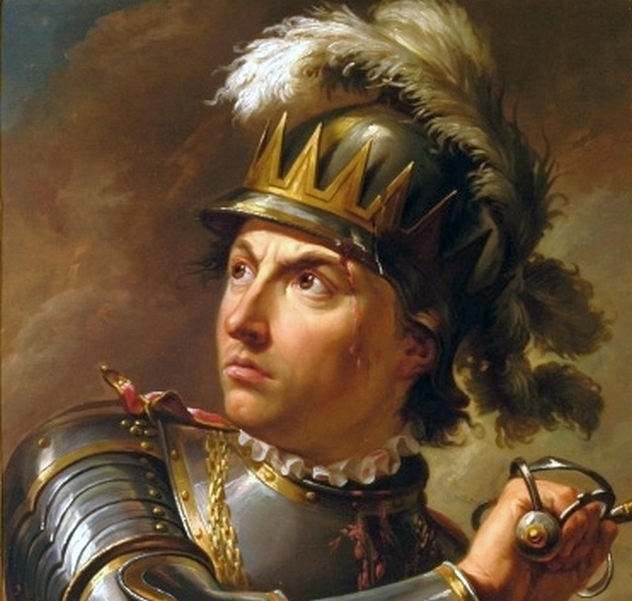
Despite possessing a name that would make a Hogwarts professor blush, Wladyslaw III was about as violent and lecherous as a 12th-century nobleman could be. Historians assume that his moniker, “Laskonogi,” refers to his having unusually long, thin gams. Lacking any contemporary portraits, we must rely on imagination to picture just how spindly Wladyslaw’s shanks really were.
The fifth son of Duke Mieszko “the Old” of Poland, the leggy lad was exiled at a young age by a jealous half brother. Fortunately for Wladyslaw, he only needed to wait for his bloodthirsty family to tear itself apart. By 1202, his four older brothers and father had either killed each other or died of post-fratricidal exhaustion, and Poland was his.
He lasted only four years before a rebellion of disgruntled nobles ousted him. Spindleshanks spent the rest of his life battling just about everyone—archbishops, relatives, and fellow warlords. His archenemy was his nephew, Wladyslaw “the Spitter,” and the two were so desperate to kill each other that they frequently ignored foreign invasions in favor of avuncular slaughter.
In his late sixties Spindleshanks managed to regain the dukedom of Poland, but was kicked out again two years later. The horny old man spent the last two years of his life much given over to “fornication with prostitutes.” Perhaps he should have stuck with paying for sex, because when Spindleshanks attempted to actually seduce a girl, she killed him.
4Alfonso ‘The Slobberer’
King Of Leon

Alfonso IX, who became King of the Spanish territories of Leon and Galicia in 1188, earned himself the moniker “El Baboso”—“The Slobberer”—for his spit-spraying fits of rage. Granted, he had plenty to be upset about. Leon was squashed between the powerful realm of Castile and the kingdoms of the Moors, and Alfonso spent much of his reign leading drool-drenched invasions of one or the other.
He also loved his family—perhaps a bit too much. His marriage to his first cousin, Theresa of Portugal, was annulled by a papal legate. After presumably showering his environs in spittle, Alfonso raised two proverbial middle fingers in the direction of Rome, and married his second cousin—Berengaria of Castile. This time, Pope Celestine III personally intervened to break up the kissing cousins, so the undeterred Slobberer just moved back in with Theresa.
But it wasn’t all war and incest. Alfonso also founded Spain’s first university at Salamanca, and convened the Cortes Generales—one of Europe’s first parliaments. Furthermore, his son Ferdinand ascended to the throne as King of Castile and Leon, paving the way for a united Spain.
3Olaf ‘Little Snack’
King Of The Isles

The Vikings had a particular talent for calling their most imposing leaders names that would seem stupid on a middle-school playground. As King of the Isles in the mid-12th century, Olaf ruled over the Hebrides and the Isle of Man. Though he was a couple of centuries late for the golden age of the Norsemen, his formidable stature earned him the name “Bitlingr,” meaning “morsel” or “small snack.” Those wanting to be specific called him “Kliningr,” which meant “bread and butter.”
When one older brother—Lagman—castrated another, Little Snack took refuge in England. Lagman vanished sometime after the year 1100, and Olaf saw his opening.
Returning to his islands, Olaf found them under attack by Orcadian forces. With the help of his badass son-in-law Somerled, Bitlingr massacred the interlopers and built a fleet so powerful that no one else dared mess with him.
Simultaneously, he assembled a sizable harem and fathered a litter of offspring. After four decades of iron-fisted rule and ongoing fornication, the Snack lost his head to a trio of conniving nephews. In fine family tradition, his son Godred hunted down the killer cousins, blinded two, and slaughtered the third.
2Constantine ‘Sh– –tyname’
Emperor Of Byzantium

Continuing the theme of fecal nicknames, we have the eighth-century Byzantine Emperor Constantine V “Copronymous,” which means “Dung-Named.” He was never quite cool enough to own the epithet—his enemies seem to have concocted it by spreading rumors that baby Constantine had soiled the baptismal font.
At the time, Byzantium was beset from the outside by Arabs and Bulgarians. On top of that, it was racked internally by a struggle between those who venerated religious icons—the “iconodules”—and those they considered heretics—the “iconoclasts.”
Constantine was an avowed iconoclast, and after defeating a coup led by his iconodule brother-in-law Artabasdos, he had the man and his children publicly blinded. He then embarked on a campaign of destroying religious images, lynching abbots, and forcing rebellious monks to marry nuns. This process was so brutal that later chroniclers described Constantine as a “pernicious, crazed, bloodthirsty, and most savage beast.”
If Byzantium’s enemies thought all this strife would weaken the empire, Sh– –tyname soon proved them wrong. He invaded Syria, smashed the Arab navy, and slaughtered the Bulgarians in a series of battles. On the way home from a campaign in 775, though, he died from a nasty case of swollen legs. The iconodules claimed it was divine retribution, and reiterated the point some decades later by digging up Copronymous’s bones and tossing them into the sea.
1Ivaylo ‘The Cabbage’
Tzar Of Bulgaria

When swineherd Ivaylo lived there in the 13th century, Bulgaria was a pretty tough place to be. Aside from the usual medieval travails of disease, famine, and ubiquitous dung, the Bulgarians had to contend with vicious Mongol raids that their lords were powerless to stop.
Ivaylo dreamed of saving his country, and in 1277 he gathered a peasant army and challenged the useless nobles. Though the rich folk taunted the lowborn leader—calling him “Bardovka” (“Radish”) or “Lahanas” (“Cabbage”)—Ivaylo made them eat those delicious words when he personally cut down the chariot-riding Tzar, took his crown, and married his queen.
For one glorious year, the mighty Cabbage was Tzar of Bulgaria. The Byzantines sent massive armies to defeat him, but the Cabbage outmaneuvered or crushed them. Only when a relative of the old royal family returned and rallied the salad-hating nobility did Ivaylo flee to his old enemies, the Mongols. Unwilling to help a man named after a vegetable, they murdered him two years later.
Still, Ivaylo is remembered for leading one of the first popular uprisings in medieval Europe—and for doing so while saddled with one of the least-inspiring sobriquets ever.
Sam Lasman is a writer living in Boston.

